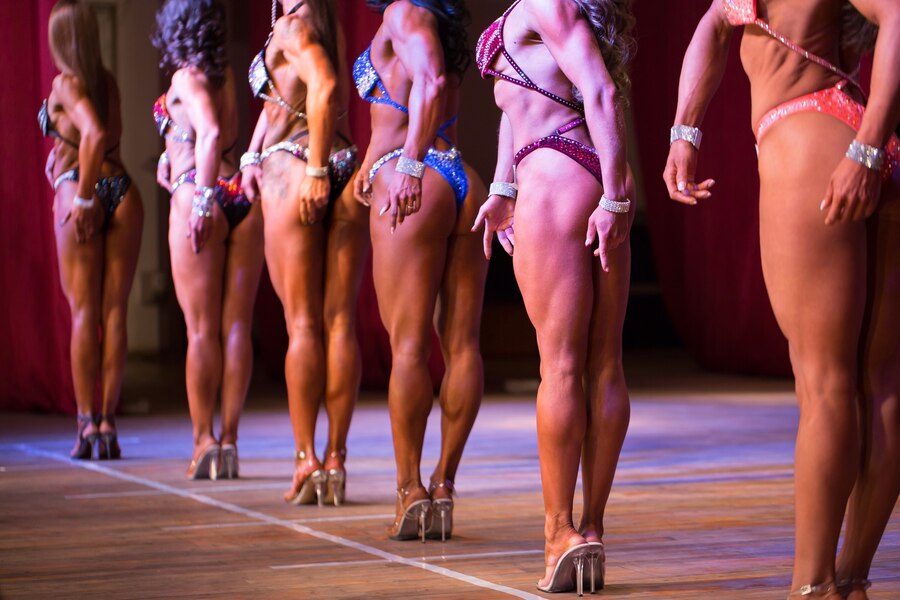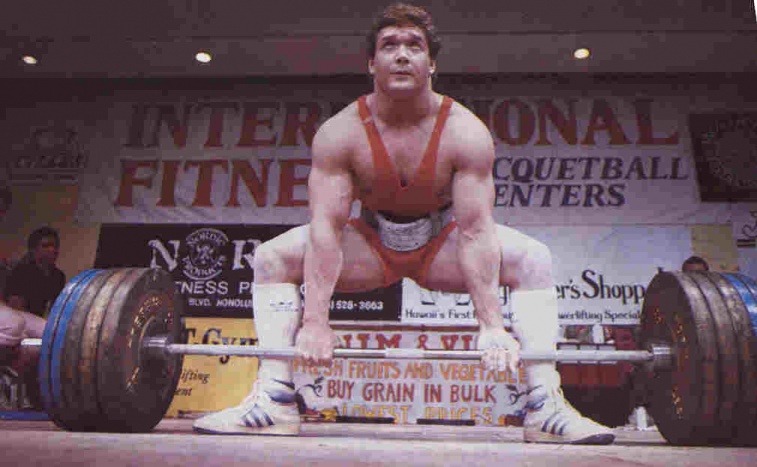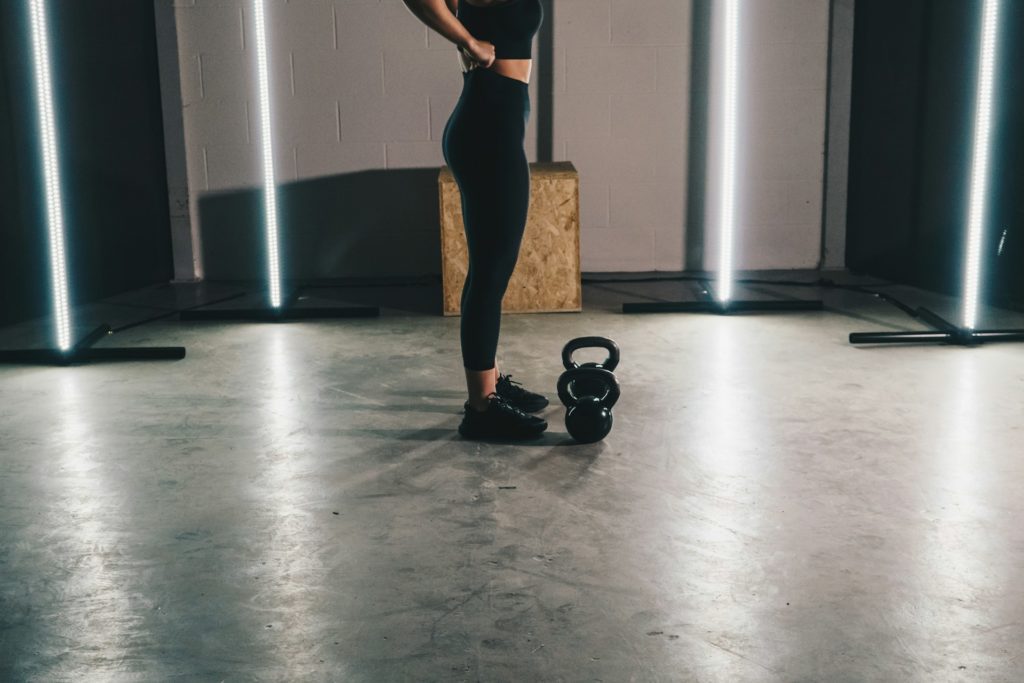Unveiling the Sculpted Artistry: A Deep Dive into NPC and IFBB Figure Competitions
Published March 5, 2024
Women’s bodybuilding has changed quite a bit over the years, from Women’s hardcore open bodybuilding to now five classes: figure, fitness, wellness, bodybuilding, and bikini. Among the various categories, Figure Competitions organized by the National Physique Committee (NPC) and the International Federation of Bodybuilding and Fitness (IFBB) stand out for their focus on feminine grace, symmetry, and muscularity. In this article, we’ll explore the intricate details of NPC and IFBB Figure Competitions, delving into their requirements, judging criteria, and what it takes to stand out on the stage.
Requirements:
Participating in NPC and IFBB Figure Competitions requires a meticulous preparation process, where athletes focus on achieving a harmonious balance between muscle definition, symmetry, and femininity. Here are some key requirements for competitors:
- Physique: Competitors in Figure Competitions should display a well-defined and symmetrical physique. Muscles should be toned and sculpted without excessive mass.
- Symmetry: Judges look for proportionality and balance in the competitor’s body. This includes well-developed shoulders, a tapered waist, and defined thighs.
- Femininity: Unlike some other bodybuilding categories, Figure Competitions emphasize a feminine and graceful presentation. Competitors should exude confidence and poise while showcasing their physique.
- Attire: Competitors typically wear two-piece swimsuits with heels that complement their physique. The outfit should be tasteful and accentuate the competitor’s strengths.
Judging Criteria:

NPC and IFBB Figure Competitions are judged based on a set of criteria that evaluate the overall presentation and physique of the competitors. The judging process is subjective, and competitors are assessed on the following key elements:
- Muscle Tone and Definition: Judges look for well-defined muscles without excessive mass. A lean and sculpted physique, particularly in the shoulders, back, and legs, is highly valued.
- Symmetry and Proportion: Competitors are evaluated on the balance and proportionality of their physique. This includes the size and shape of muscle groups, creating a harmonious overall appearance.
- Presentation and Stage Presence: Confidence, poise, and stage presence play a crucial role in scoring. Competitors are expected to display their physique with grace and femininity, engaging the audience and judges.
- Posing Routine: A well-choreographed posing routine allows competitors to showcase their strengths and hide any weaknesses. Judges pay attention to the fluidity and creativity of the routine.
- Overall Impression: Judges consider the overall impact a competitor makes on stage, taking into account the combination of physique, presentation, and charisma.
NOTE: Competitors should NOT display striations/graininess, and be less muscular than Women’s Physique.
Participating in NPC and IFBB Figure Competitions is a challenging yet rewarding journey for athletes seeking to showcase their dedication to physical fitness and sculpted aesthetics. The stringent requirements and subjective judging criteria make these competitions a true test of an athlete’s commitment to their craft. As the fitness industry continues to evolve, NPC and IFBB Figure Competitions remain a platform for women to express their dedication, strength, and femininity on a stage where the body becomes a canvas for sculpted artistry.
If you are interested in starting on your Women’s Figure journey, check out the training program we wrote below!
Note: Before starting any new fitness program, it’s essential to consult with a healthcare professional or certified fitness trainer to ensure the routine is suitable for individual needs and capabilities.
Training Split:
Day 1: Upper Body – Push
- Barbell Bench Press:
- 4 sets x 8-10 reps
- Dumbbell Shoulder Press:
- 3 sets x 10-12 reps
- Incline Dumbbell Flyes:
- 3 sets x 12-15 reps
- Tricep Dips:
- 3 sets x 12-15 reps
- Tricep Rope Pushdowns:
- 3 sets x 15-20 reps
Day 2: Lower Body
- Back Squats:
- 4 sets x 8-10 reps
- Romanian Deadlifts:
- 3 sets x 10-12 reps
- Walking Lunges:
- 3 sets x 12-15 reps per leg
- Leg Press:
- 3 sets x 12-15 reps
- Calf Raises:
- 4 sets x 15-20 reps
Day 3: Rest or Active Recovery
Day 4: Upper Body – Pull
- Pull-Ups or Lat Pulldowns:
- 4 sets x 8-10 reps
- Bent Over Barbell Rows:
- 3 sets x 10-12 reps
- Face Pulls:
- 3 sets x 12-15 reps
- Bicep Curl Variations (Barbell, Dumbbell, Cable):
- 3 sets x 12-15 reps
Day 5: Cardio and Core
- HIIT Cardio (High-Intensity Interval Training):
- 20-30 minutes (e.g., sprints, cycling, jump rope)
- Planks:
- 3 sets x 60 seconds
- Russian Twists:
- 3 sets x 20 reps (with or without weight)
Day 6: Full Body – Compound Movements
- Deadlifts:
- 4 sets x 8-10 reps
- Overhead Press:
- 3 sets x 10-12 reps
- Dumbbell Step-Ups:
- 3 sets x 12-15 reps per leg
- Hammer Curls:
- 3 sets x 12-15 reps
Day 7: Rest
Key Points
- Progressive Overload: Gradually increase weights to challenge the muscles over time.
- Consistency: Stick to the routine and make adjustments as needed.
- Cardiovascular Training: Incorporate regular cardio sessions for overall conditioning.
- Flexibility and Mobility: Include dynamic stretches and mobility exercises to enhance flexibility.
- Recovery: Ensure adequate rest, sleep, and nutrition to support recovery and muscle growth.
- Posing Practice: Dedicate time for posing practice to enhance stage presence and confidence.
Remember, individual responses to training may vary, so it’s essential to monitor progress and make adjustments accordingly. Additionally, consider consulting with a fitness professional for personalized guidance tailored to specific goals and body types. Don’t forget to talk to your doctor before starting on any new physical endeavor!


